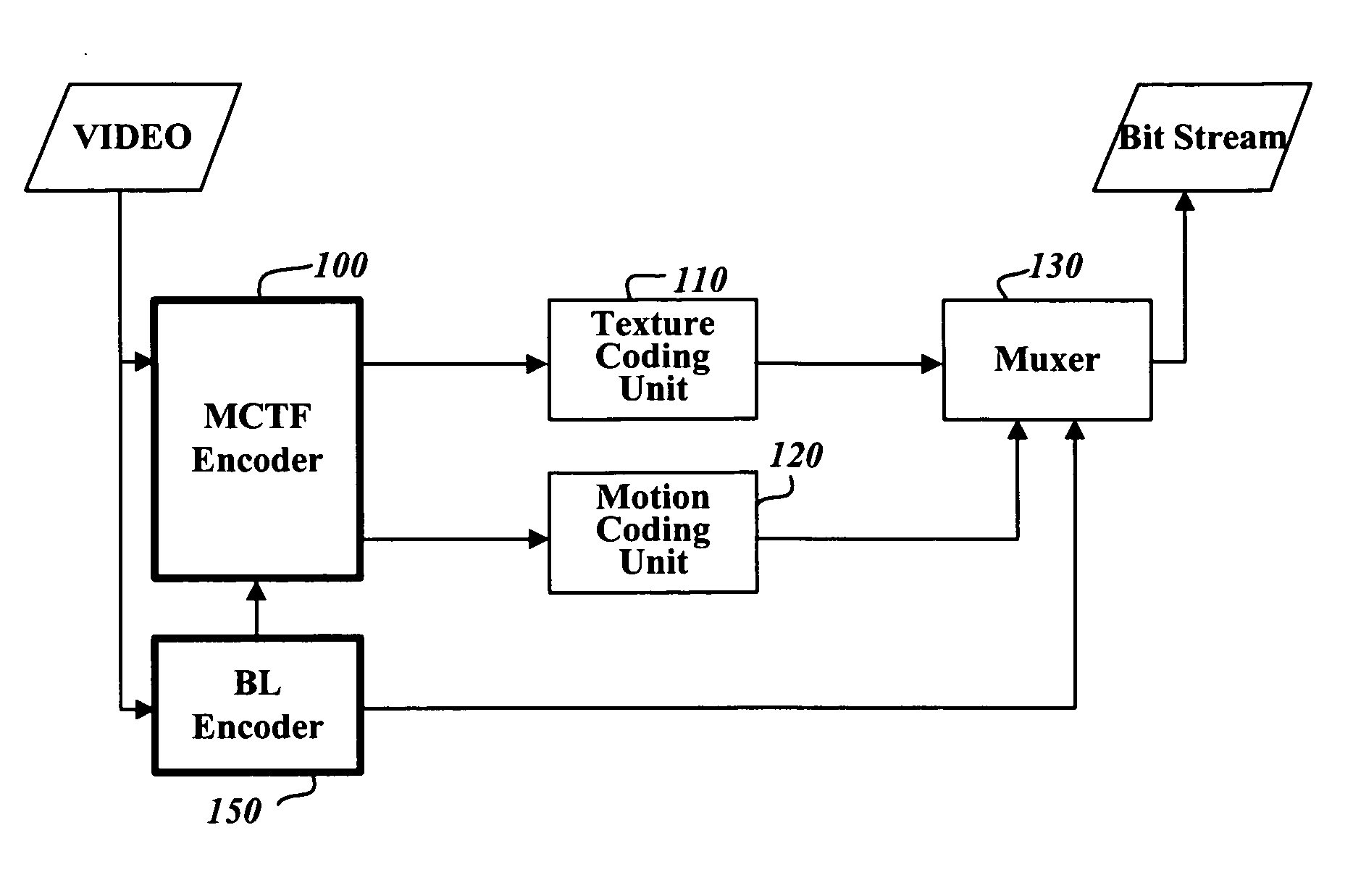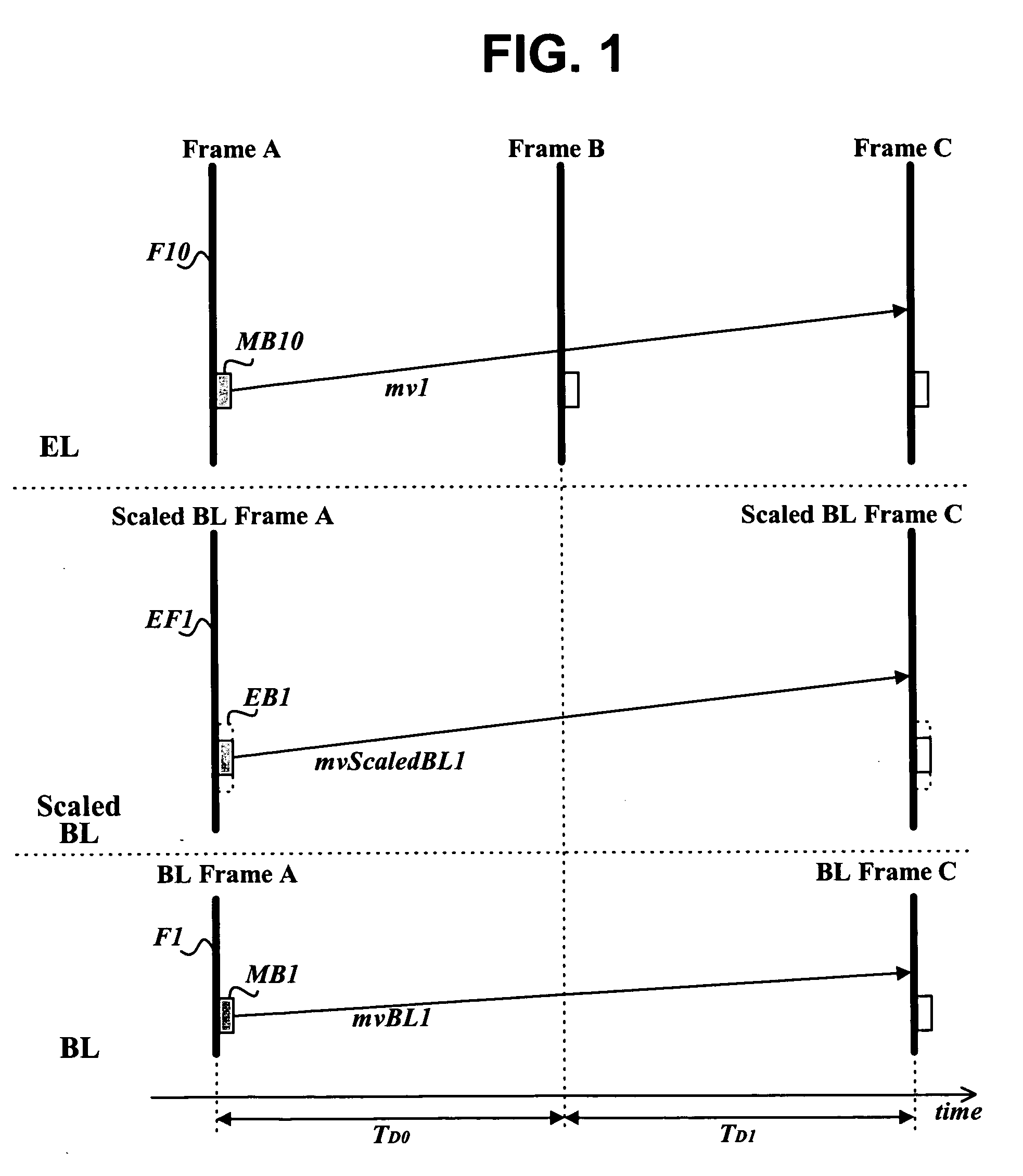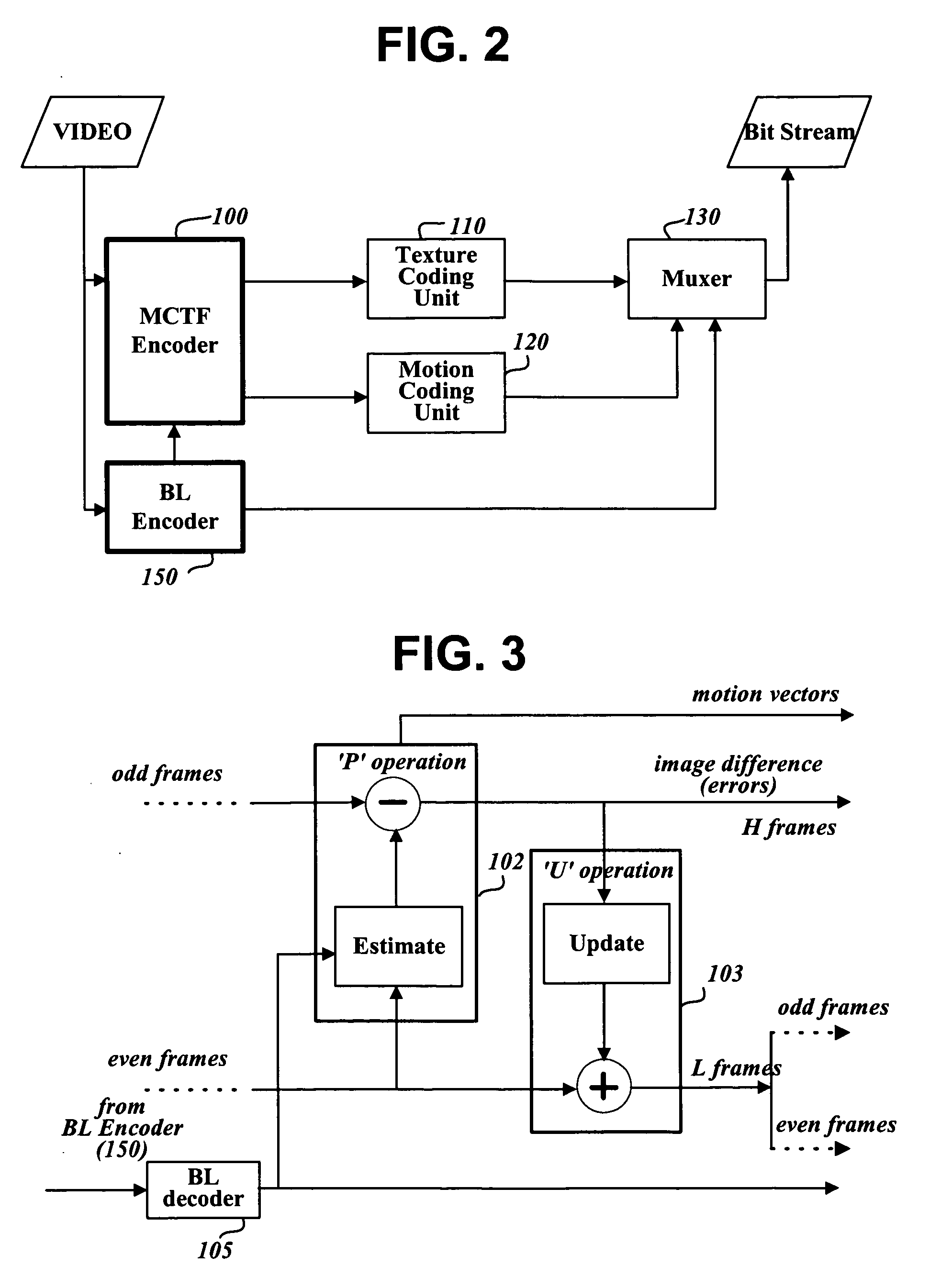Method and apparatus for encoding/decoding video signal using motion vectors of pictures in base layer
a technology of motion vectors and video signals, applied in signal generators with optical-mechanical scanning, color televisions with bandwidth reduction, etc., can solve the problems of imposing a great burden on content providers, difficult to allocate high bandwidth, and tv signals
- Summary
- Abstract
- Description
- Claims
- Application Information
AI Technical Summary
Benefits of technology
Problems solved by technology
Method used
Image
Examples
Embodiment Construction
[0036] Preferred embodiments of the present invention will now be described in detail with reference to the accompanying drawings.
[0037]FIG. 2 is a block diagram of a video signal encoding apparatus to which a scalable video signal coding method according to the present invention is applied.
[0038] The video signal encoding apparatus shown in FIG. 2 comprises an MCTF encoder 100, a texture coding unit 110, a motion coding unit 120, a base layer encoder 150, and a muxer (or multiplexer) 130. The MCTF encoder 100 encodes an input video signal in units of macroblocks in an MCTF scheme, and generates suitable management information. The texture coding unit 110 converts information of encoded macroblocks into a compressed bitstream. The motion coding unit 120 codes motion vectors of image blocks obtained by the MCTF encoder 100 into a compressed bitstream according to a specified scheme. The base layer encoder 150 encodes an input video signal according to a specified scheme, for exampl...
PUM
 Login to View More
Login to View More Abstract
Description
Claims
Application Information
 Login to View More
Login to View More - R&D
- Intellectual Property
- Life Sciences
- Materials
- Tech Scout
- Unparalleled Data Quality
- Higher Quality Content
- 60% Fewer Hallucinations
Browse by: Latest US Patents, China's latest patents, Technical Efficacy Thesaurus, Application Domain, Technology Topic, Popular Technical Reports.
© 2025 PatSnap. All rights reserved.Legal|Privacy policy|Modern Slavery Act Transparency Statement|Sitemap|About US| Contact US: help@patsnap.com



